This post focuses on how to prevent and treat nappy rash. Does your little one suffer with nappy rash? So many babies and toddlers do. Whether it’s teething, colds, food intolerances or eczema. Sometimes it takes some sleuthing to get to the “bottom” of it. This post will help you figure out how to prevent and treat nappy rash with natural remedies, lifestyle changes, and natural nappy creams.
Towards the end of my pregnancy, I started to give nappy cream some thought – maybe I would need nappy cream in my hospital bag, and at my baby’s changing area? I pondered if mainstream nappy creams would be full of junk ingredients, like a lot of mainstream baby products.
Like a lot of parents to be, a Bounty newborn baby pack was thrust into my hands, with its free mini tube of Sudocrem Nappy Cream.
Scanning over the ingredients (including sodium benzoate, paraffin wax, and heavy liquid paraffin), I quickly realised I’d need to look for a natural and healthy alternative nappy cream.
Browsing online I wondered which of the nappy creams would be the most effective, and if I could find the best nappy cream for my baby.
Would nappy cream be a preventative, stopping nappy rash from happening in the first place, or a cure – only to be used once signs of nappy rash developed?
What causes nappy rash?
The term “nappy rash” tends to be used for all kinds of skin irritations in the nappy area. If baby has a rash here, it’s important to look for the cause.
True nappy rash is thought to be caused by enzymes in poo breaking down the skin. This is compounded by the ammonia chemical burn that happens when urine reacts with bacteria from feces. But other factors can cause a rash in the nappy area too – scroll to the bottom of the page to see a list.
I was surprised to learn that the type of nappy, whether cloth or disposable, is often not a factor. Despite the ideas that disposable nappy companies may portray, wetness alone is not the cause, but it is a factor.
The single biggest factor in how to prevent and treat nappy rash is to avoid leaving baby in a poo-filled nappy too long. The longer the nappy has been on, the greater the risk of nappy rash developing.
How to avoid nappy rash?
Unsurprisingly, the best way to avoid nappy rash is to change baby regularly, and immediately once they poo, ensuring that at each nappy change the entire nappy area is thoroughly cleaned to remove all urine and fecal matter.
Changing your baby every three hours or less seems to be the best bet, and as soon as possible once they’ve done a poo.
Did you know that breastfed babies suffer less nappy rash, since there are fewer digestive enzymes passed through into their nappy? Breastmilk is more easily digested than the cow’s milk protein in formula.
That’s a great reason to breastfeed, if you can!
Before using nappy cream, try letting your baby have some nappy free time. Half an hour daily is beneficial to allow skin to heal without any barriers or coverings. This might be enough to keep redness and soreness at bay.
In addition, completely ditch chemical wet wipes and switch to Water Wipes, Cheeky Wipes, or just plain old water and cotton wool. You can also try throwing a chamomile tea bag into the cleansing water for an extra soothing wash.
Here’s a really helpful article on some natural remedies to try before nappy cream, such as aloe vera, apple cider vinegar, yogurt, probiotics, and sea salt.
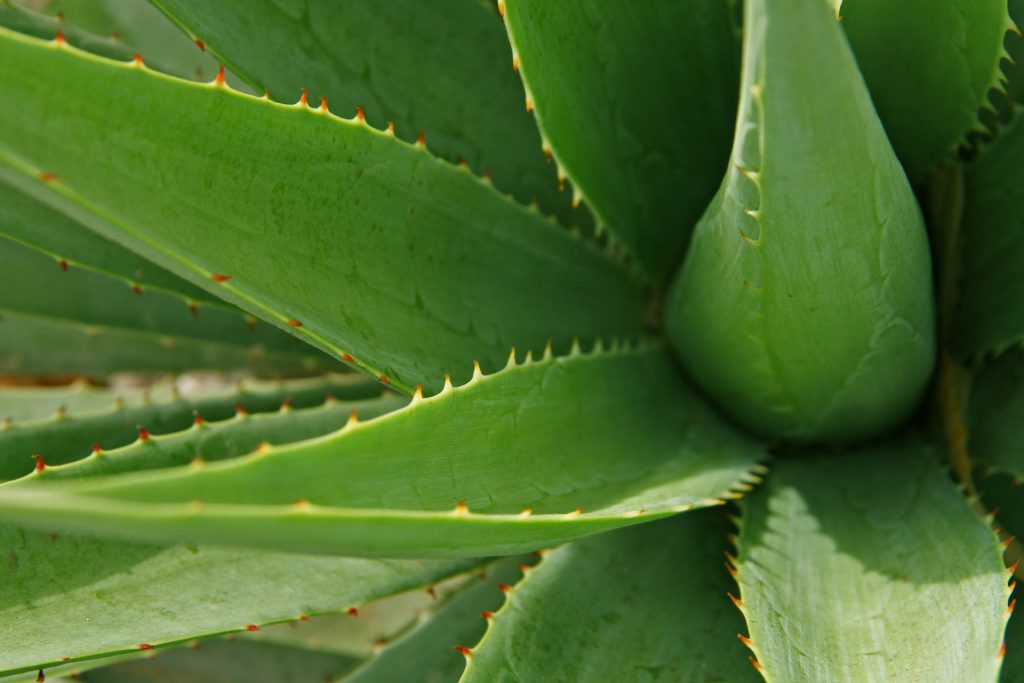
You could also try these gorgeous and simple recipes for coconut oil as a treatment for nappy rash. The recipes contain beneficial ingredients like calendula, chamomile and shea butter.
Or how about this DIY nappy balm containing bentonite clay and fermented cod liver oil?
How natural nappy creams differ from mainstream nappy creams
Mainstream nappy creams fall into two different camps:
- Preventative nappy creams that may be used daily.
- Treatment nappy creams that are intended for short-term use to treat symptoms of nappy rash. The ingredients in these nappy creams are harsher and not suitable for every day use.
Natural nappy creams can be used as a preventative, and as a treatment. Some natural nappy creams contain a barrier to moisture, usually through the inclusion of zinc oxide, along with key healing and soothing ingredients such as essential oils and herbal extracts.
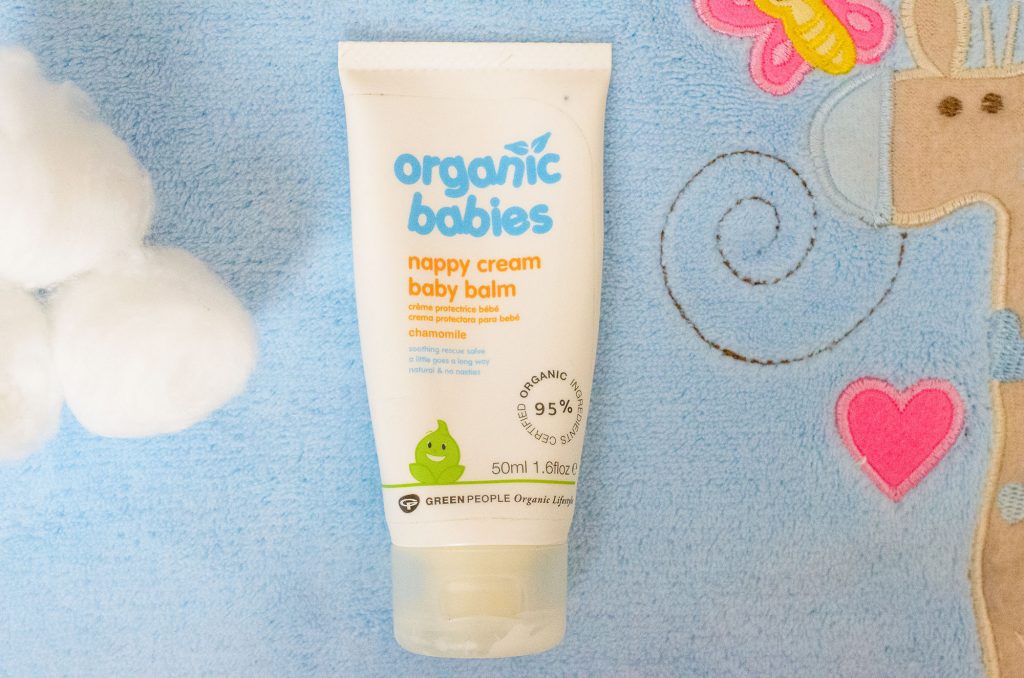
Despite being natural, ingredients like calendula, chamomile, mallow, and pansy are powerful healers and soothers, and provide analgesic and antiseptic value.
In my opinion, Weleda make the best nappy creams. You can read my reviews of Weleda nappy creams to learn more about them and their beneficial ingredients.
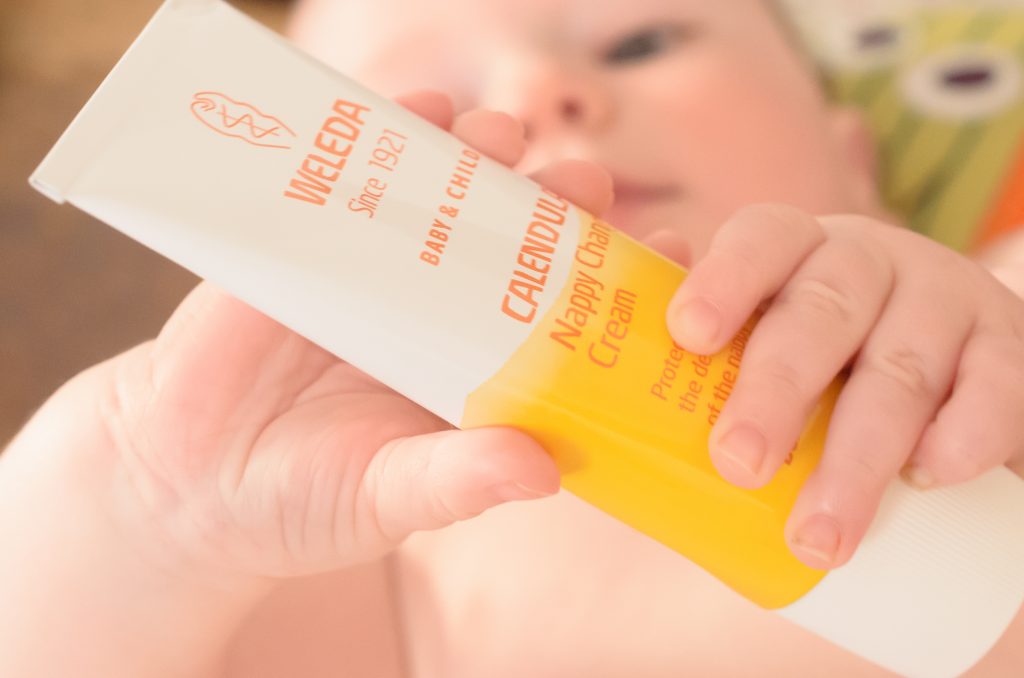
When to use nappy cream?
In an ideal world, we wouldn’t need to use nappy cream. Yet, a bum in a nappy creates an unnaturally warm, damp, ammonia rich environment, which a barrier cream countermeasures.
So when should you use nappy cream? Some nappy cream manufacturers will tell you to use some at each nappy change, but this may not be necessary.
Less is definitely more, and trial and error are key. The Nappy Lady recommends only using nappy cream once the bottom is looking a little red, and not using nappy cream at all once nappy rash has really set in, since it inhibits the skin’s ability to breathe.
Personally, I find it works best for Jonah if I use nappy cream at most nappy changes. We’ve not had a bad case of nappy rash yet, so we must be doing something right.
How much nappy cream to apply?
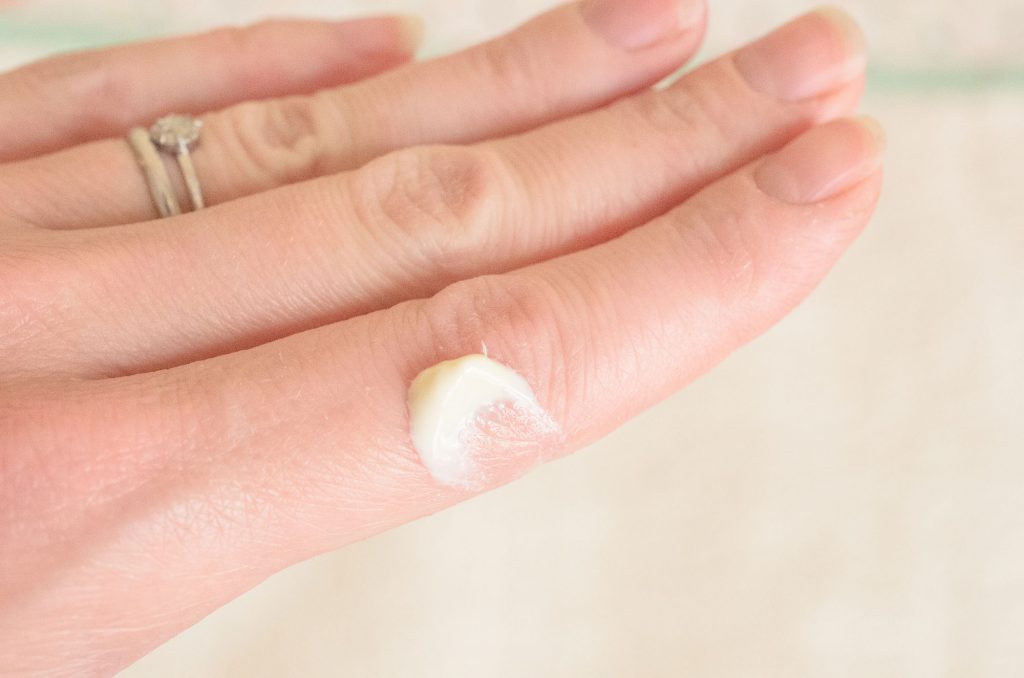
Just a smear will do, ensuring it’s thoroughly rubbed in so it can’t transfer to the nappy. Slathering on too much cream is unlikely to help your baby’s nappy rash, and in fact using too much nappy cream can be detrimental since it may reduce the absorbency of the nappy.
Where to apply nappy cream
Despite some manufacturer advice to apply nappy cream to the whole nappy area, it’s only really necessary to apply it to the areas that need it e.g. creases in the skin, and to the actual skin of the bottom.
Avoid using nappy cream on a girl’s labia or a boy’s penis.
Nappy creams and cloth nappies
You can use nappy cream with cloth nappies, but it’s recommended to use a nappy liner so the cream doesn’t directly touch the cloth of the nappy, potentially affecting its absorbency.
We’ve used Weleda and Green People Nappy Cream with Bambino Mio Miosolo and Bambinex bamboo nappies for several months with no problems.
What is the best nappy cream?
Which nappy creams can you trust, and which should you avoid? Let’s look at some popular mainstream preventative nappy creams:
- Bepanthen Nappy Care Ointment: I wouldn’t use this because it contains mineral oils. There is so much conflicting advice out there regarding mineral oils, my bottom line 😀 is I prefer to use vegetable oils on our skin since they moisturise skin better and their source is better trusted.
- Sudocrem Care and Protect: again there are mineral oils present, plus silicones (coat the skin and prevent true moisturisation), PEGs (contamination concerns), tocopheryl acetate (contamination concerns), and parfum (possible endocrine disruptors).
- Metanium Everyday: mineral oils, silicones.
- Johnson’s 3-in-1 Nappy Care Cream: tocopheryl acetate, parfum.
- Dove Rich Moisture Nappy Cream: mineral oils, silicones, parfum, phenoxyethanol (links with reactions and nervous system function, especially in infants).
- Skinfix Baby Nappy Balm: mineral oils.
- Aveeno Baby Daily Care Barrier Cream: mineral oils.
- Boots Baby Nappy Cream: mineral oils, BHT (a skin, eye, and lung irritant with concerns for organ system toxicity).
Let’s look at the mainstream treatment nappy creams:
- Sudocrem Antiseptic Healing Cream: contains mineral oils; benzyl alcohol and benzyl benzoate (irritating preservatives), benzyl cinnamate (possible allergen and toxicant), sodium benzoate (controversial because it reacts in a bad way with other ingredients), butylated hydroxyanisole (endocrine disruptor), and fragrance.
- Metanium Nappy Rash Ointment: mineral oils, silicones.
Now we’ve seen the mainstream nappy creams, let’s have a look at the natural nappy creams.
My favourite natural nappy creams
- Weleda’s offerings include White White Mallow Nappy Cream and Calendula Nappy Cream – both use zinc oxide as a barrier but White Mallow doesn’t contain lanolin so is suitable for ultra-sensitive skin. White Mallow is my personal favourite, but Calendula smells divine!
- Alteya Organics Nappy Cream is Natrue certified, smells beautiful, and contains protective zinc oxide alongside apricot and sea buckthorn oils, rose, calendula, and chamomile to soothe, calm and promote faster healing.
- Green People Nappy Balm also has a zinc oxide/beeswax barrier, but contains shea butter and hemp seed oil. It also has calendula/chamomile to heal and soothe.
- Burt’s Bees Baby Bee Diaper Ointment is another gorgeous natural nappy cream with a zinc oxide/beeswax barrier, using sweet almond/sunflower seed/jojoba seed oils to moisturise, and again including calendula/chamomile flower oils to heal and soothe.
- Two simple but effective nappy creams with few ingredients are Bentley Organic Baby Nappy Balm and Balm Balm Fragrance Free Baby Balm.
- If you’re looking for a zinc oxide free nappy cream, then try Earth Mama Angel Baby Bottom Balm which includes moisturising olive oil/jojoba oils and shea butter, calendula and lavender to heal and soothe, antibacterial/antifungal tea tree leaf and myrrh oil, flavonoid rich St. John’s wort, healing and cleansing chickweed extract, and soothing and moisturising plantain extract.
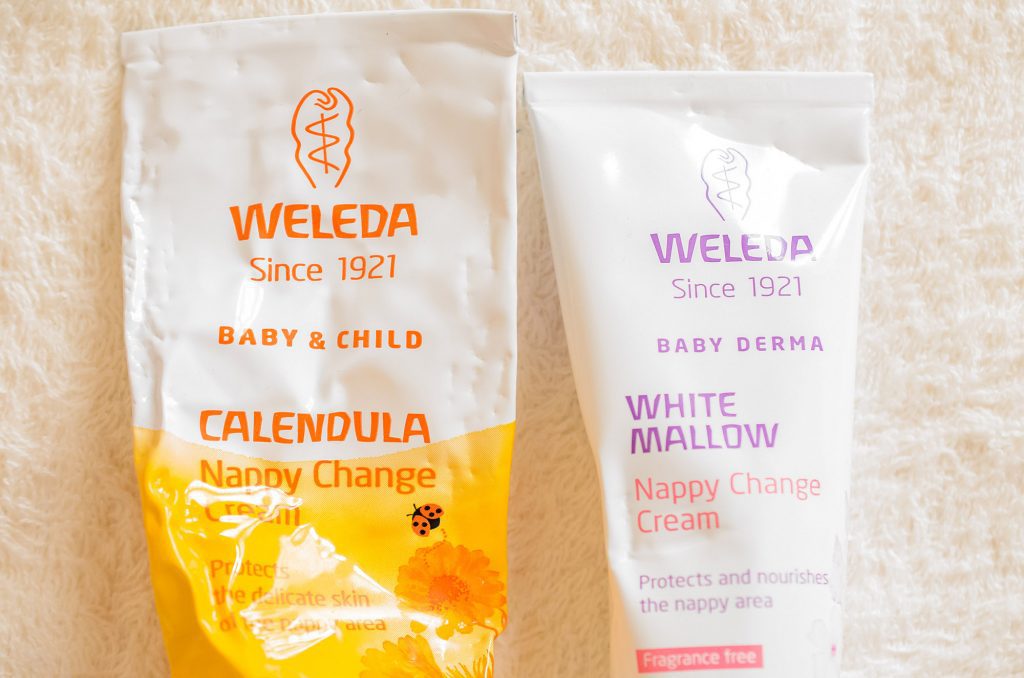
When nappy rash persists
What if you change baby regularly, but nappy rash still occurs? What else could be going on?
- Sensitivity to other products on the bottom, such as chemical-laden baby wipes.
- Although teething doesn’t directly cause nappy rash, many parents find that the increase in dribbling causes a red bottom.
- Illness such as a cold, especially if your little one is on antibiotics.
- External irritants. If you’re using cloth nappies, this could be laundry product build up. Are you using anything else on baby’s bottom that could irritate it? Have you tried different laundry products or a strip wash?
- For babies on solids, sensitivity to foods. Acidic foods such as tomatoes and citrus can often be culprits, but keeping a food diary will help pinpoint any offending foodstuffs.
- Eczema or psoriasis can be mistaken for nappy rash.
- Thrush, which cream from the doctor can clear up. If using cloth nappies you will need to wash at 60 degrees.
- If the nappy rash is around the waistband then this is likely sweat rash and nappy free time daily will help.
Concluding
Nappy rash can be a mysterious beast, and is a painful experience for poor baby. With a bit of sleuthing it’s possible to get to the bottom 😀 of the reasons nappy rash is occurring. So many things go on with babies at the same time, don’t they?
Prompt nappy changes and proper cleaning really do help with true nappy rash, and being aware of what else could be going on will prevent misdiagnosis.
I believe it’s possible to prevent and treat nappy rash with natural nappy creams. There’s no need to resort to the treatment creams we’ve looked at in this post, with their irritating and harmful ingredients.
Natural nappy creams are effective nappy creams, with time trusted ingredients to soothe, heal, and moisturise. I say we get back to where we were before potentially harmful treatments were available by using plants and minerals to remedy the ails of our children.
How do you prevent and treat nappy rash? Let me know in the comments!
Until next time!

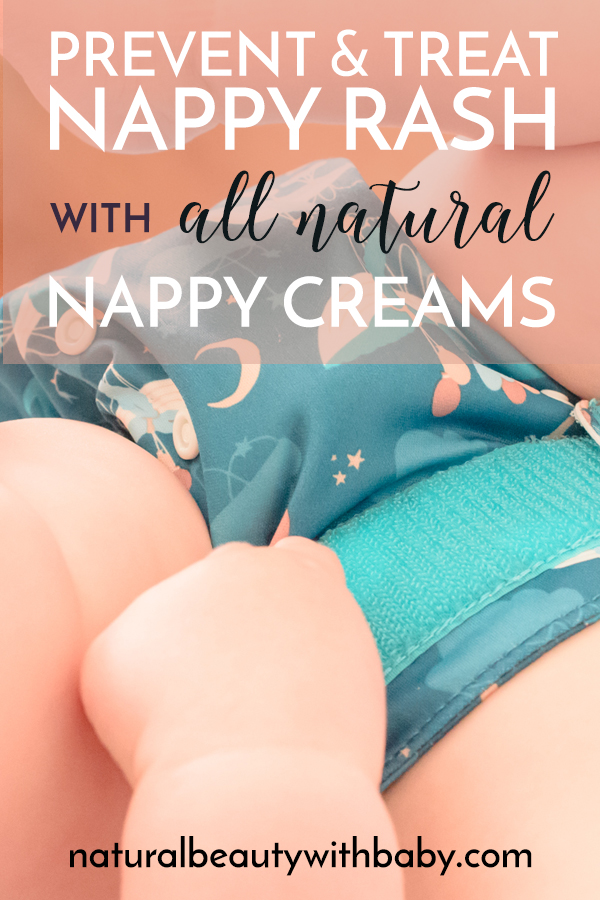
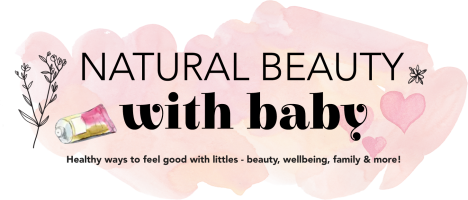
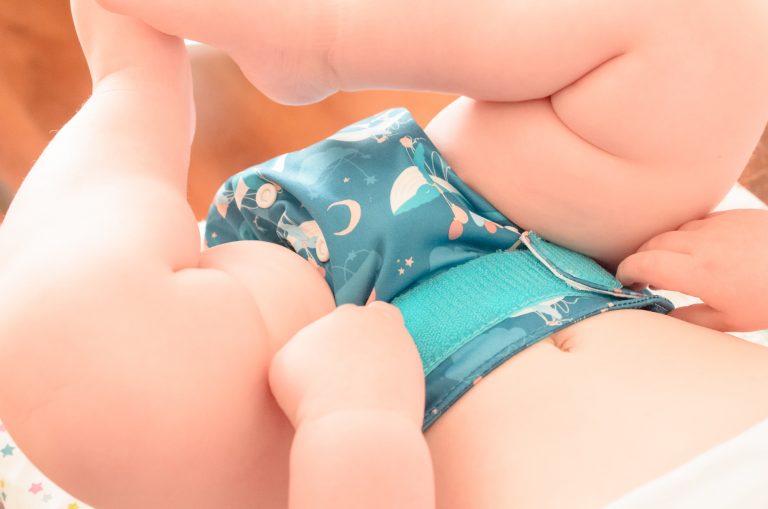



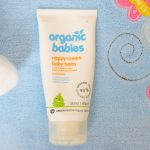
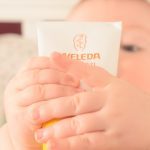
2 Comments
I prefer to use natural nappy rash creams after my experience with my nine month old and his horrific nappy rash. It was so bad I could barely look at it. I’m so glad you mentioned calendula and chamomile because I recently bought a nappy rash salve with calendula, chamomile and manuka in it and it has worked absolute wonders for my nine month old’s nappy rash. The tears have stopped (both him and me) and his skin is healed and soft. Thanks for the helpful article 🙂
Oh how lovely to hear! Nappy rash looks so painful, I’m so glad your little one has healed. My seven month old has it every now and again, but we’re keeping on top of it. Calendula and chamomile are so healing. I’ve not tried manuka but I can understand why it would be helpful. Thanks for sharing that! 🙂 xx